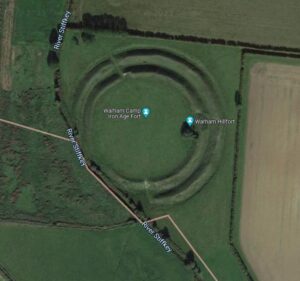The New Stone Age (Neolithic Era)
The period following the Ice Ages brought Neolithic or New Stone Age Man to the area and, there is plenty of evidence of settled communities in North Norfolk, stone axes having been found in Thornage and Saxlingham Parishes as well as other places.
Several concentrations of prehistoric but undateable burnt flint have been found in the field by Valley Farm.
It is not known whether Stone Age implements have ever been found in Sharrington, but flint chippings have been found here, all with a “Bulb of Percussion” which, it is believed, can only be formed by striking the edge of a flint core to manufacture a flint implement.
It is believed that, during this period, farming began in East Anglia including the keeping of domestic animals.
The Bronze Age
Objects of copper and bronze, an alloy of copper and tin, were first introduced into Norfolk about 4,500, years ago. Round barrows, circular burial mounds favoured by Bronze Age people, are found nearly everywhere. The nearest round barrows to Sharrington are found in the parishes of Blakeney, Wiveton, Saxlingham and Thornage. Of course, in view of the extensive farming activities in this part of the county, many round barrows could have been ploughed away.
The Iron Age
Iron tools and weapons, sharper than bronze, first came to Britain from the Continent of Europe, but, by about 650 B.C. were being made locally.
In 54 B.C. Julius Caesar raided Britain with his legions from Gaul. In his writings, he listed the “Cenimagni” as being a tribe which he had encountered. This was more probably “Iceni Magni”, The Great Iceni, and the name Iceni was recorded in the first century A.D. The distribution of their coins indicates that their tribal area covered Norfolk, Suffolk and part of Cambridgeshire.
As well as Caesar’s incursion, all was not peaceful in the area, as is shown by five large forts, with massive earthworks, at Holkham, Warham, South Creake and Narborough, which form an arc around Northwest Norfolk.
The Iron Age hill fort of Warham camp is about eleven kilometres from Sharrington. Described by the University of East Anglia as “the best preserved hill fort in Norfolk” and well worth a visit.

References:
- “An Historical Atlas of Norfolk” Published by the Norfolk Museums Service. 2nd
- Norfolk Heritage Explorer websit
